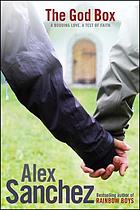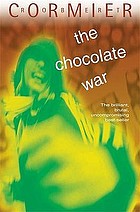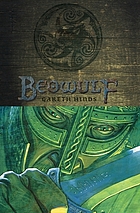Hinton, S.E. The Outsiders. Puffin Press. 1997. (ISBN: 9780140385724; $9.99 U.S.; Paperback)
*New York Herald Tribune Best Teenage Books List, 1967

*Chicago Tribune Book World Spring Book Festival Honor Book, 1967
*Media and Methods Maxi Award, 1975
*American Library Association Best Young Adults Books, 1975
*Massachusetts Children's Book Award, 1979
a) What does the title mean?
"The Outsiders" refers to the place in society that Pony, Soda, Darry, and their friends occupy in society. They are the outsiders- the group that doesn't fit in with the other groups. They are at the bottom of the social pecking order, and they do not fit in with any of the other groups.
There are core groups in most high schools- the Jocks, the Nerds, the Freaks, etc. My daughter (age 12) calls that "TOP" social group "The Girlie Girls", or if she's had a really bad day "The A-------". In this book, that "TOP" social group is called "Soc". They are the group that perceives themselves to be the best of the best. They have the money, the brains, and the attitude that they are the best.
The Outsiders in this group are called the Greasers. They are the group of kids that have very little, and struggle for everything that they do have. Hard breaks and hard times seem to follow these kids, making a life that is already difficult even harder for them. They live on the bad side of town, have very little money, and don't wear designer clothes. They take pride in their attitude, their gangs, and the grease they put into their long hair in order to define themselves. This group perceives themselves to be less than everyone else, and this leads to their attitude - the attitude that invites trouble and the wrong kind of attention.
b) What does it mean to "stay golden?"
The original "golden" line took place between Pony and Johnny when they were hiding out in the church, and Pony quotes the poem by Robert Frost (on pages 85-86). The boys had been watching the sunrise behind the church. For the first time in the story, you see the true depth of Pony's character. He quotes a poem he read by Frost. Pony sees life beyond the limitations of the "Greaser" label. He has a certain innocence about him. He will stand up for himself against the Soc's, but he does not go looking for a fight. He doesn't carry a weapon to defend himself. He is an anomoly in the world in which he lives.
The "golden" tag comes back again at the end of the book, when Pony finds the letter from Johnny in the book Gone With the Wind.. "I've been thinking about it, and that poem, that guy that wrote it, he meant you're gold when you're a kid, like green. When you're a kid, everything's new, dawn. It's just when you get used to everything that it's day. Like the way you dig sunsets, Pony. That's gold. Keep that way, it's a good way to be." (The Outsiders, pp 186-187).
What struck me at this point were some of the behaviors we had been seeing out of Pony since Johnny's death. He broke a bottle to fight with some Socs at lunch. He stopped caring about his grades, and he was failing all of his classes. He had started to get a hard look in his eyes. The letter from Johnny seemed to remind Pony of who he was, and what he wanted to be.
I believe that to "stay golden" means to hold on to Childhood innocence and enthusiasm, and HOPE. Pony sees possibilities in the world. He reads, and wants to expand his horizons. As a result of his experiences after the death of Bob, Pony realizes that everyone has problems, life is tough all over, and there really isn't that much that separates Soc from Greaser.
Author Web Site:
http://www.sehinton.com/
 ISBN 13:978-1416909002. Soft cover $8.99.
ISBN 13:978-1416909002. Soft cover $8.99.


